Source:Xinhua 2015年03月23日 10:29
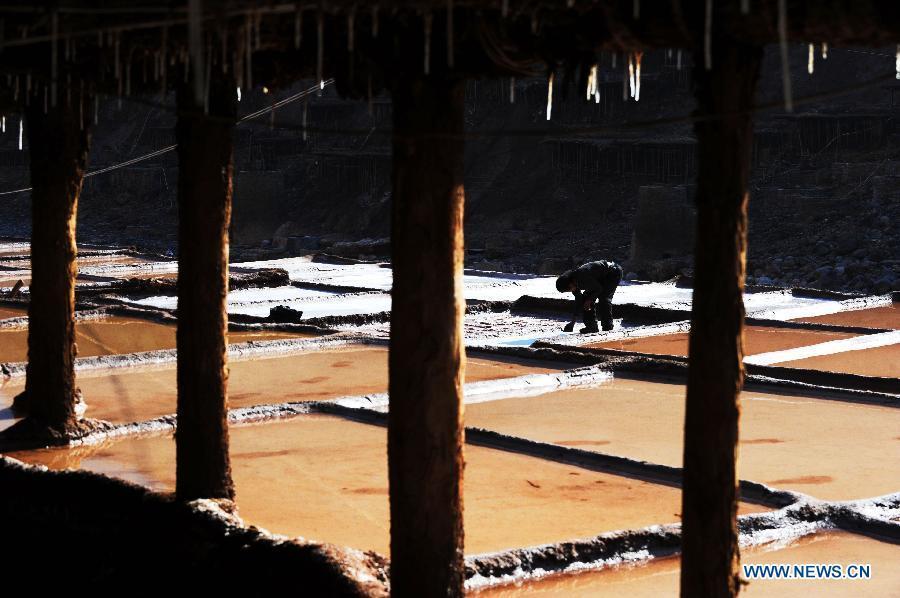
A villager works on salt pans in Markam County, southwest China's Tibet Autonomous Region, March 21, 2015. Markam County, with rich salt resources, has more than 3,000 salt pans to evaporate brine in the sun with an ancestral technique since Tang Dynasty (618-907AD), which is also the oldest method of salt production. This salt evaporation method was listed as one of China's National Intangible Cultural Heritage in 2009.(Xinhua/Wen Tao)

A villager works on salt pans in Markam County, southwest China's Tibet Autonomous Region, March 21, 2015. Markam County, with rich salt resources, has more than 3,000 salt pans to evaporate brine in the sun with an ancestral technique since Tang Dynasty (618-907AD), which is also the oldest method of salt production. This salt evaporation method was listed as one of China's National Intangible Cultural Heritage in 2009. (Xinhua/Wen Tao)
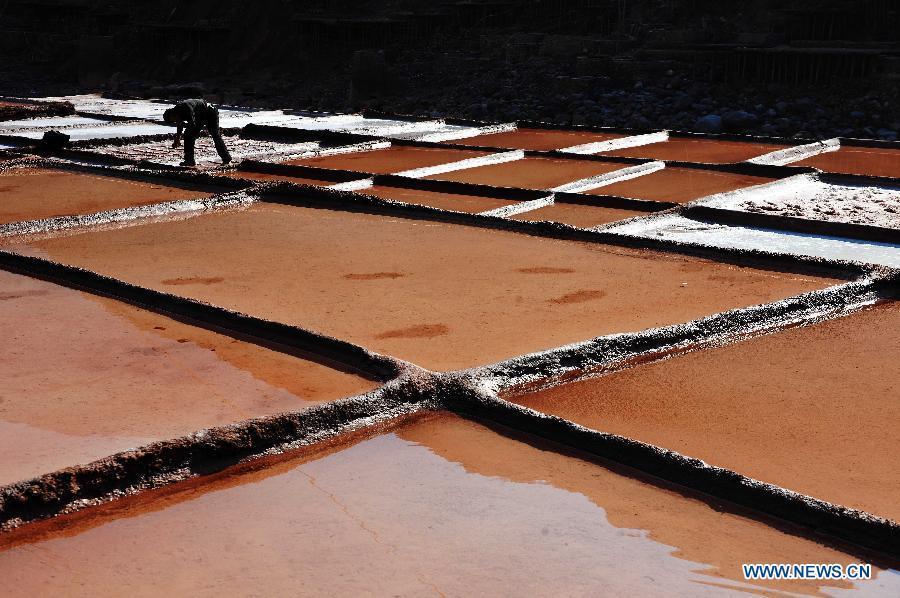
A villager works on salt pans in Markam County, southwest China's Tibet Autonomous Region, March 21, 2015. Markam County, with rich salt resources, has more than 3,000 salt pans to evaporate brine in the sun with an ancestral technique since Tang Dynasty (618-907AD), which is also the oldest method of salt production. This salt evaporation method was listed as one of China's National Intangible Cultural Heritage in 2009. (Xinhua/Zhang Xiaohua)
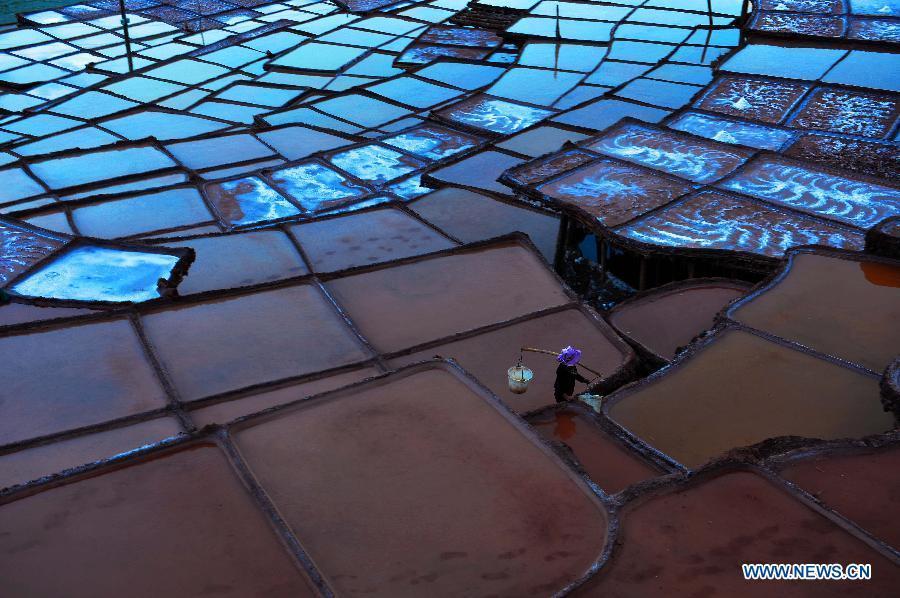
A villager works on salt pans in Markam County, southwest China's Tibet Autonomous Region, March 21, 2015. Markam County, with rich salt resources, has more than 3,000 salt pans to evaporate brine in the sun with an ancestral technique since Tang Dynasty (618-907AD), which is also the oldest method of salt production. This salt evaporation method was listed as one of China's National Intangible Cultural Heritage in 2009. (Xinhua/Wen Tao)
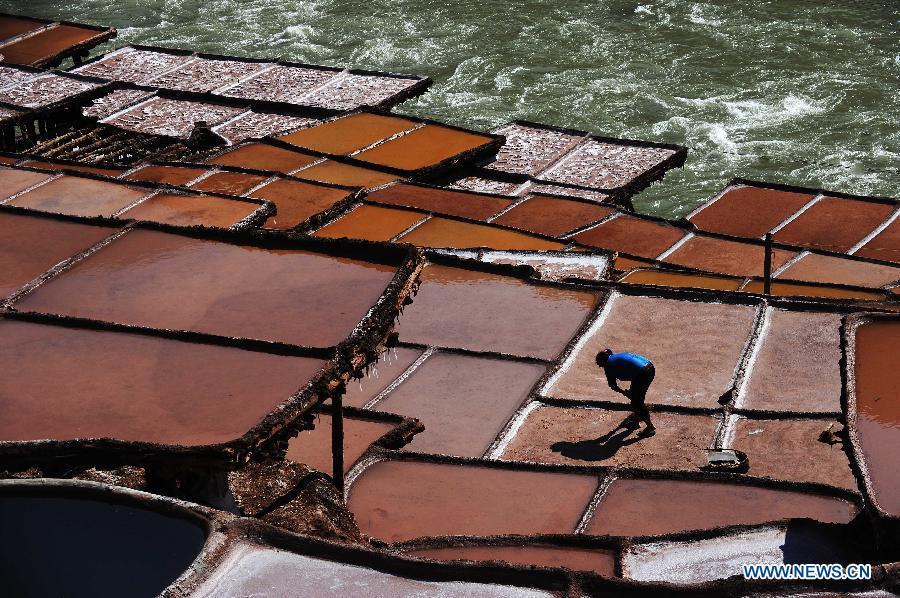
A villager works on salt pans in Markam County, southwest China's Tibet Autonomous Region, March 21, 2015. Markam County, with rich salt resources, has more than 3,000 salt pans to evaporate brine in the sun with an ancestral technique since Tang Dynasty (618-907AD), which is also the oldest method of salt production. This salt evaporation method was listed as one of China's National Intangible Cultural Heritage in 2009. (Xinhua/Wen Tao)
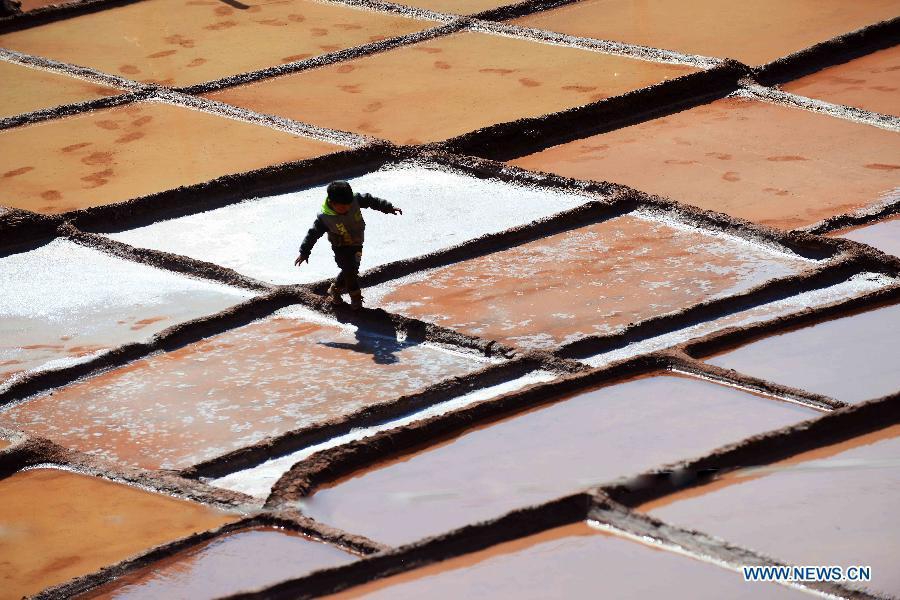
A boy plays on salt pans in Markam County, southwest China's Tibet Autonomous Region, March 21, 2015. Markam County, with rich salt resources, has more than 3,000 salt pans to evaporate brine in the sun with an ancestral technique since Tang Dynasty (618-907AD), which is also the oldest method of salt production. This salt evaporation method was listed as one of China's National Intangible Cultural Heritage in 2009. (Xinhua/Zhang Xiaohua)
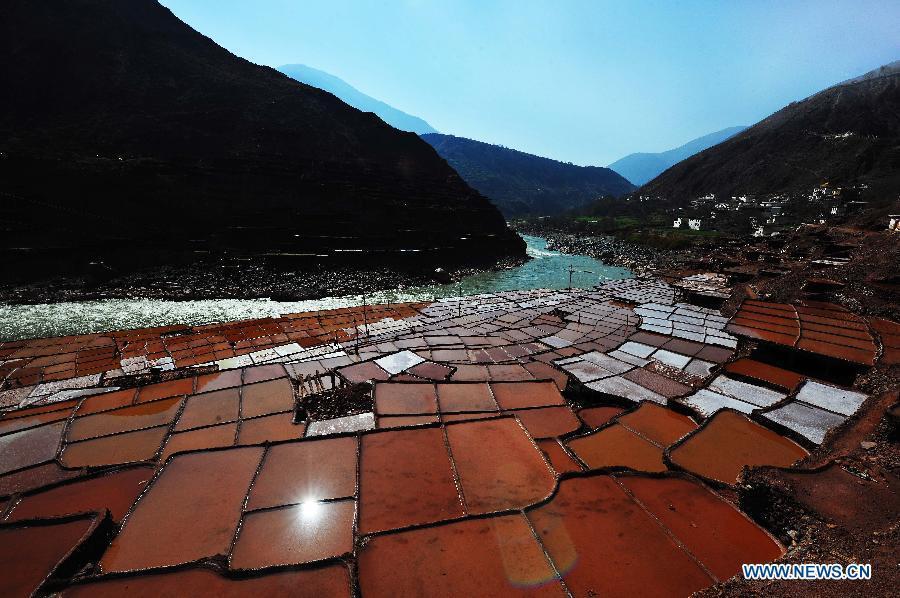
Photo taken on March 21, 2015 shows the salt pans in Markam County, southwest China's Tibet Autonomous Region. Markam County, with rich salt resources, has more than 3,000 salt pans to evaporate brine in the sun with an ancestral technique since Tang Dynasty (618-907AD), which is also the oldest method of salt production. This salt evaporation method was listed as one of China's National Intangible Cultural Heritage in 2009. (Xinhua/Wen Tao)
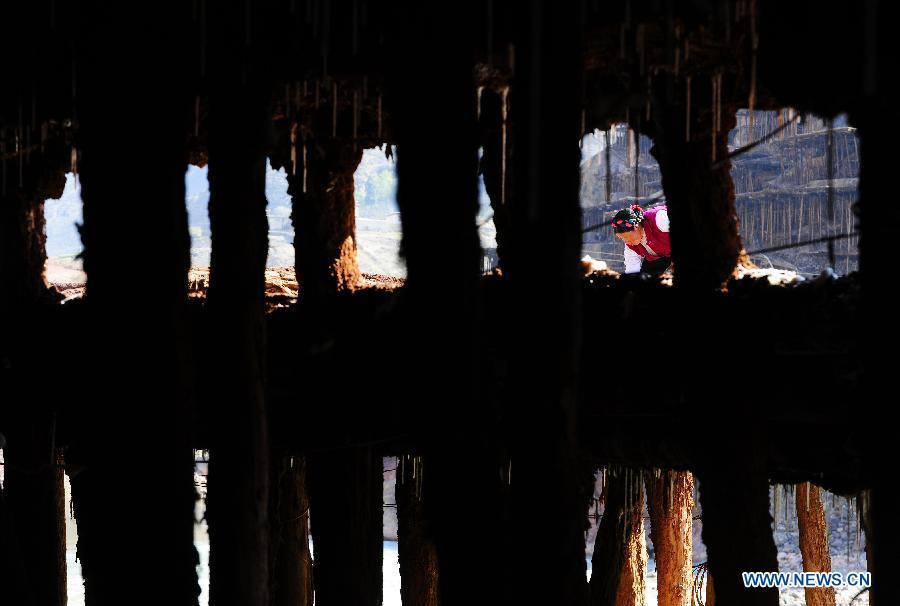
A villager works on salt pans in Markam County, southwest China's Tibet Autonomous Region, March 21, 2015. Markam County, with rich salt resources, has more than 3,000 salt pans to evaporate brine in the sun with an ancestral technique since Tang Dynasty (618-907AD), which is also the oldest method of salt production. This salt evaporation method was listed as one of China's National Intangible Cultural Heritage in 2009. (Xinhua/Wen Tao)